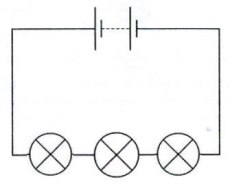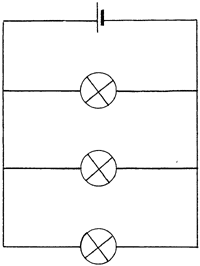Series circuit: The current flowing through each component is the same, with no alternative routes for the current to flow to.
If one lamp breaks, the rest of the lamps won’t work, as it will break the circuit.
The voltage across each component in series added up, equals to the power supply. (This is the same for resistors). Each bulb has the same voltage and has the same brightness.
If resistance changes in one component, the potential difference for other components will change too.
A series circuit isn’t practical for domestic lighting.

Parallel circuit: The current splits, taking up two or more routes. Because of this, if one component fails, the other ones won’t. More components can be added in parallel, without the need of more voltage, as it stays the same.
The more components connected in parallel, the more energy used. If the lamps in parallel are identical, then the current will divide equally.
The total current flowing from a cell equals the sum of current flowing in all the loops.
Mains sockets and lights in homes are wired in parallel because each socket receives the full mains voltage. The circuit will continue to work, even if one lamp stops working.

the specifications point numbers are wrong guys this is 2.7 not 2.8
LikeLike
But Thanks anyways
LikeLike